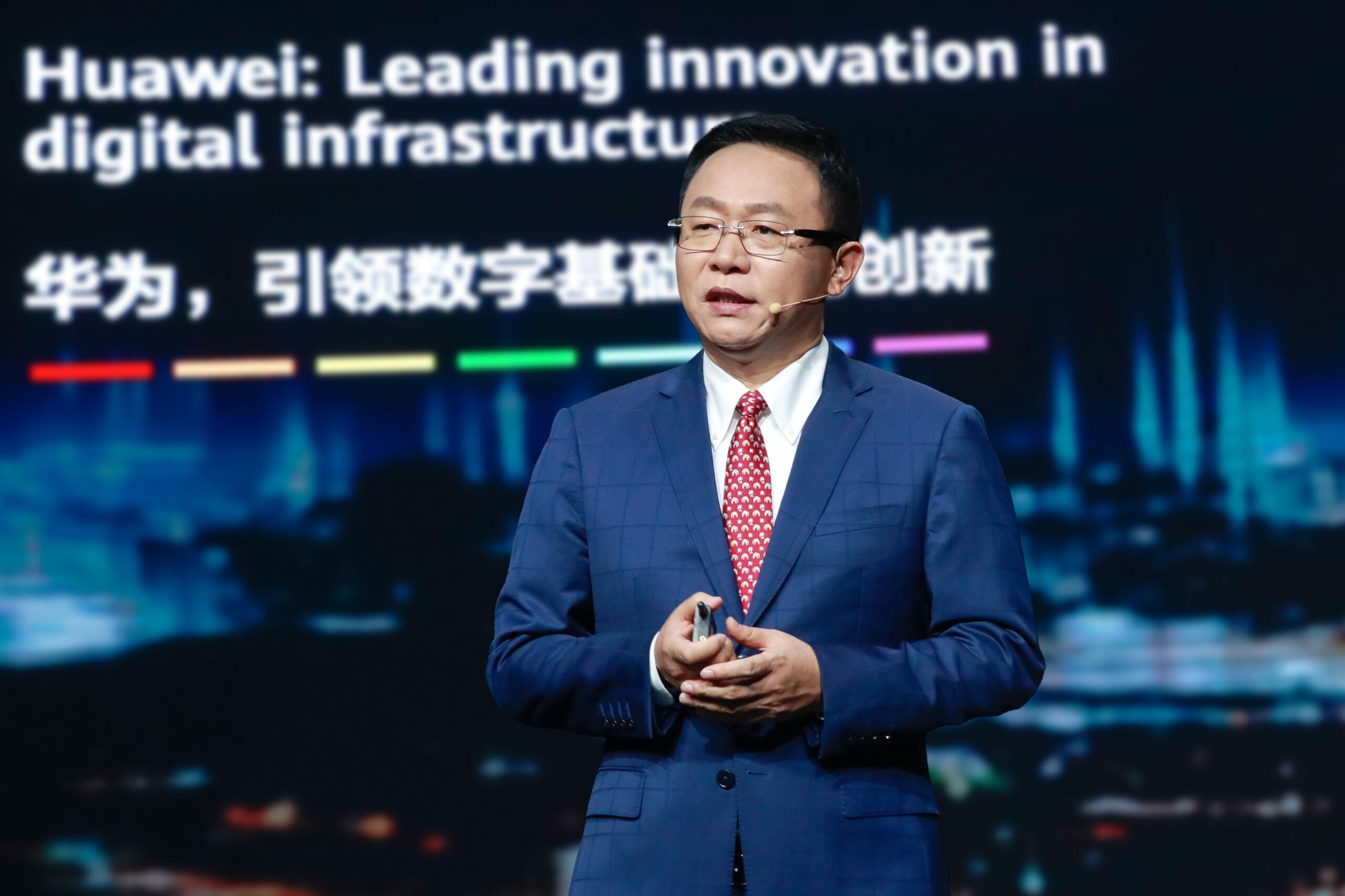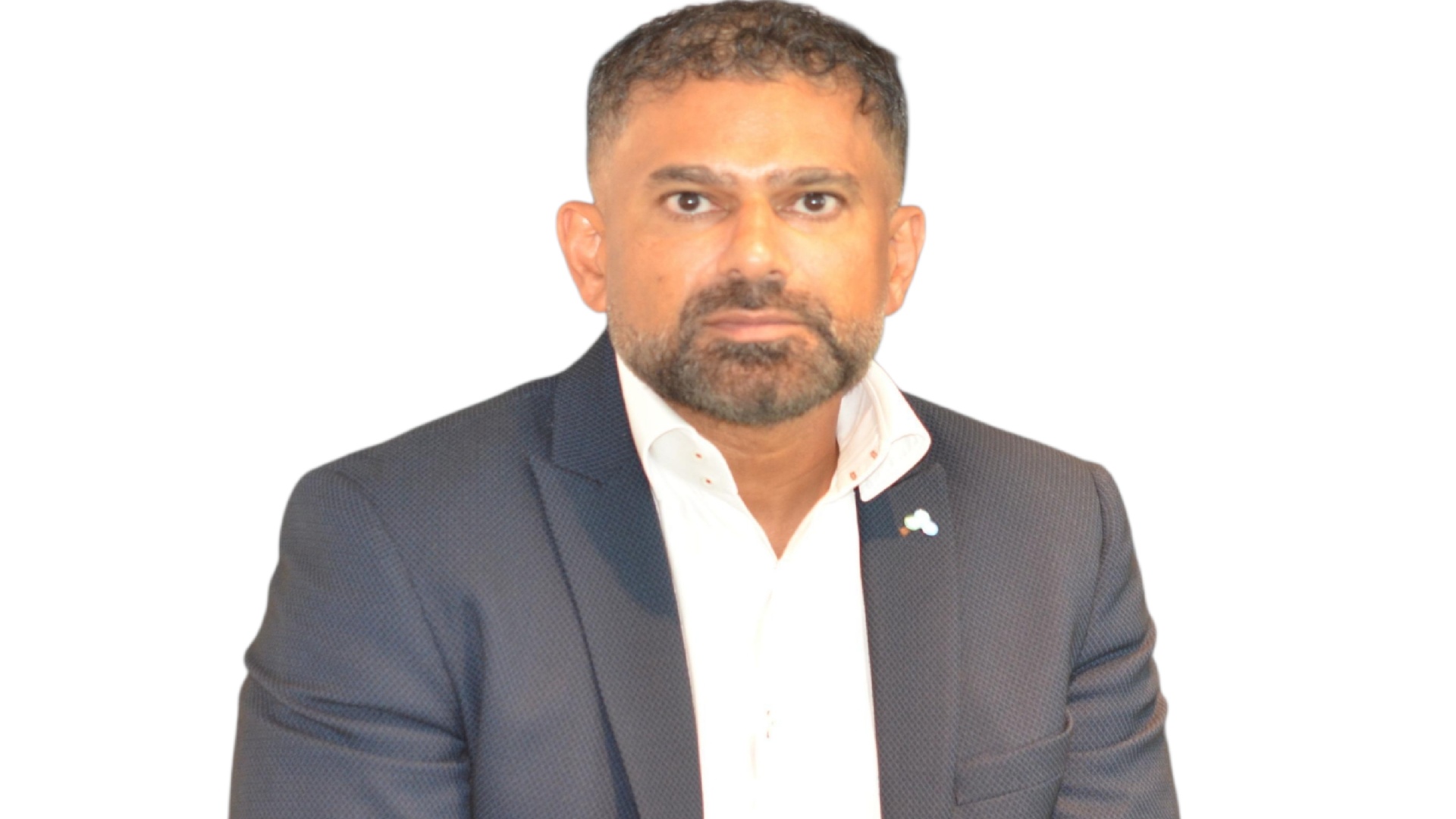Technology
Huawei Unveils Innovations in Digital Infrastructure, Creating More Value for Customers and Partners

Huawei unveiled breakthrough innovations in several different domains, providing a first look at its comprehensive digital infrastructure range. Several of these innovations are completely new, and have never been seen before outside of Huawei’s labs. The release highlighted how these products and solutions are set to shape digital infrastructure for the next decade. Huawei is one of the world’s leading creators of digital infrastructure, and is dedicated to building a fully connected, intelligent world.
During the event, Huawei Executive Director and President of ICT Products & Solutions David Wang delivered a keynote speech titled Leading Innovation in Digital Infrastructure. In the speech, he noted, “Infrastructure has been vital to every stage of human development. The intelligent world is fast approaching and digital infrastructure is the key to building this intelligent world. The world now faces unprecedented challenges and so Huawei will remain customer-centric and committed to innovation. We are dedicated to breakthroughs to serve major application scenarios such as digital offices, smart manufacturing, wide area network (WAN), and data centers, and accelerate the development of the global digital infrastructure.”
He went on to explain how digital infrastructure of the future would need to be hyper secure, reliable, and deterministic, and need more efficient data circulation and computing power as the world dives into digital. This speech started with the ideas Wang introduced recently at the release event for Huawei’s Intelligent World 2030 report. The report itself finds that, by 2030, global connections will top 200 billion; monthly data per cellular user will grow 40 times to 600 gigabytes; worldwide general computing volume will grow 10 times over; and data generated will increase by 23 times, reaching one yottabyte for the first time. All of this creates a picture of new challenges and opportunities for the digital infrastructure sector over the next 10 years.
The main focus of his speech today, however, was seven specific innovations Huawei has launched or is about to launch onto the market.
Digital Meeting Rooms: Powered by Intelligent “Office Twins” and Bridging the World With Ubiquitous Gigabit and Seamless Collaboration
The newest “Office Twins” from Huawei are the AirEngine 6761 and IdeaHub. AirEngine 6761 is the industry’s highest-performance Wi-Fi 6E product that delivers an experience-centric, all-wireless network for businesses, with instant and secure user access, interaction latency down to 10 milliseconds, and ultra-fast file transfer at 1,000 Mbps. As part of the next generation of smart office tools, the 6-in-1 design of IdeaHub allows it to function as a projector, whiteboard, computer, conference endpoint, speaker, and microphone, enabling “frictionless collaboration” across different locations.
Huawei Optixsense: Accelerating Pipeline Inspection
The Huawei OptiXsense EF3000 is the company’s first product under the OpiXsense family, and is currently the most accurate optical sensor of the industry. Coming packed with Huawei’s leading optical technologies, the OptiXsense uses a unique optical digital signal processor (oDSP) and a new vibration ripple analysis engine for automatic incident identification. The OptiXsense achieves 97% accuracy, compared with the industry average of 60%–80%. It is designed to streamline oil and gas pipeline inspections, and will ultimately enable intelligent, unmanned pipeline inspections. Going forward, OptiXsense products will also support other domains, monitoring temperature, stress, and water quality.
The Industry’s First Deterministic IP Network Solution: Making Lights-Out Digital Factories a Reality
Industrial control systems demand extremely low levels of network latency and jitter. Conventional IP networks cannot deliver these standards, but today Huawei unveiled the industry’s first deterministic IP network solution, providing end-to-end guaranteed network performance to support industrial controls. This solution uses CloudEngine S6730-H-V2 switches and NetEngine 8000 M8 routers. Huawei’s innovations in IP system engineering and algorithms deliver microsecond-level single-hop latency and keep jitter within 30 microseconds from end to end, regardless of the number of hops. The solution supports multi-hop networking of tens of thousands of nodes, so it can deliver deterministic IP network performance for a workshop, a factory, or even multiple factories. It can even support centralized remote control of production lines located thousands of kilometers away.
H-OTN: Leading A Revolution in Secure Production Networks
H-OTN, the industry’s first converged optical device that supports hard pipe technologies, introduces an innovative Point-to-Multipoint (P2MP) OTN architecture for access networks. For the first time, Huawei enables an end-to-end hard pipe, from the access network to WAN, using a redefined product architecture and converged protocols. This not only guarantees 100% security, but also reduces latency by at least 60%. Huawei H-OTN will provide highly reliable communications networks, with ultra-low latency and simplified O&M, to support digital transformation across industries such as electric power and transportation.
An Industry-Leading IP Network Solution: Enabling Cross-Region Computing Resource Scheduling
Huawei’s newest IP network solution delivers industry-leading performance to help customers build vast, unified networks for cross-region computing. This solution combines Huawei’s CloudEngine 16800 data center switches and NetEngine 8000 F8 WAN routers. Thanks to intelligent & lossless algorithm 2.0 and intelligent cloud graph algorithm, this Huawei solution is able to construct ultra-large data center networks connecting up to 270,000 servers, three times larger than the industry average. It guarantees 0 packet loss on Ethernet and lowers latency by 25%. This solution also features intelligent routing by cloud service type and cloud-network resource factor, improving transmission efficiency by 30%.
Oceanstor Pacific: Ushering in an Era of High-Performance Data Analytics (HPDA)
OceanStor Pacific is the industry’s first distributed storage for HPDA, representing huge breakthroughs in technical architecture, including data flows adaptive to large and small I/O, converged indexing for unstructured data, ultra-high-density hardware, and EC algorithms. With this solution, a single storage unit can make data analytics 30% more efficient by supporting hybrid workloads across high-performance computing (HPC), big data analytics, and AI computing, breaking through the performance, protocol, and capacity barriers that typically limit HPDA. OceanStor Pacific has already been deployed in oilfields, and is set to accelerate the digital transformation of oil and gas exploration and create digital basins and oilfields.
Huawei CC Solution: Building the Industry’s First Public Diversified Computing Service Platform
Huawei’s CC Solution helps customers roll out public platforms that provide diversified computing power. It is designed with three scenarios in mind: AI computing centers, high performance computing centers, and integrated big data centers. The solution has four advantages over traditional solutions: diversified computing, rapid rollout, efficient utilization, and on-demand service. This solution is already in use in multiple projects, powering industry clusters with computing clusters and supporting the digital transformation of countless industries.
Tech Interviews
Unlocking ROI: How Sovereign AI Platforms Accelerate Innovation

Exclusive Interview with Kevin Dallas, Chief Executive Officer, Enterprise DB
You interviewed more than 2000 senior executives across 13 countries about how they are planning for a genetic AI world. Why a genetic AI and why now?
Well, first of all there’s a large economic opportunity around AI. We forecast to be $16 trillion by 2030, and there’s about a trillion dollars that’s going to be spent in the area of AI over the next 12 months alone. So, every enterprise, every nation is investing in AI.
And when we say AI, there’s different types of AI. There’s generative AI, genetic AI, physical AI, and the time is now for that investment. You’re seeing it in the event today where many companies are making investments across the AI spectrum.
What is the data and AI sovereignty, and what happens when enterprises make it a mission-critical part of their strategy?
Well, to be able to actually run these intelligent applications, there is a need for a sovereign data and AI platform from EDB, Enterprise DB, our partners, NVIDIA, RedHat, and Supermicro. And with this new sovereign platform, we hope to deliver our customers the platform that they need to drive rapid innovation around these new AI applications.
Data sovereignty is gaining increased attention globally in the Middle East and the surrounding markets. How is EDB ensuring compliance, trust, and performance in your deployments?
Well, first of all, we’re finding that in this survey, it was very interesting, 95% of respondents are investing in a sovereign data and AI platform over the next three years.
And what they’re seeing is real benefits. They’re seeing two to three extra the velocity in terms of building out AI applications, and they’re seeing a five-fold increase in ROI. So, this is driving a lot of attention around this space.
Now, from an EDB perspective, we are delivering a standard sovereign data and AI platform that accelerates our customers to market. So, it’s a plug and play platform that resolves the security issues, compliance issues, and regulatory challenges that our customers have in a plug and play way.
How important is the UAE or the GCC region for EDB? Can you tell us about your corporate strategy in the GCC and how that aligns with the regional’s national agenda?
Well, what we found is that the biggest investments globally in sovereign data and AI are actually happening here in the region, in the UAE. There is a national vision that’s been set around open and around sovereign data and AI.
So, we’re very aligned in terms of our approach here. And the region, it’s very much like a Silicon Valley of sovereign data and AI, where there’s a lot of rich discussion around new use cases that our partners and our customers want to enable today versus tomorrow. So, it’s here and now in the region.
Looking ahead, six to 12 months from now, what is your message to the enterprises, governments, and other organizations who are considering or already on the AI journey?
I think in the next six to 12 months, focus on building your own sovereign data and AI platform. By doing this, it’s going to have a fivefold increase in your ROI and certainly increase your velocity to market.
But there is also, I think, a misconception. When we talk about sovereign, we talk about the benefit of secure, we talk about the benefit of compliance and regulatory requirements. Meeting those criteria, in some cases, can be viewed as slowing down the rate of innovations.
The opposite is true with our platform. By using a platform that has this capability built in, you’re able to accelerate your time to market.
How does EDB Postgres AI support data sovereignty in practice?
From a sovereign data and AI platform perspective, there are five key criteria that our customers need in the platform. One, open source based. This guarantees interoperability, access to talent, and it avoids vendor lock-in. This is something that even at a national level is important, open source based.
Second, the need to support multiple workloads, transactional, analytics, and AI workloads on one unified platform. Not three, but one. Third, there’s a need for a low-code, no-code application development environment. An environment that accelerates your time to market, an environment that democratizes AI for all.
So, you don’t have to be a developer, you can be a business decision maker and still create applications. Fourth, there needs to be a single pane glass view across the estate so you can monitor, secure, and drive compliance and meet those regulatory requirements across your entire estate. And then last, but by no means least, you need to be able to deploy in a hybrid fashion, meaning it’s not all about running workloads in the cloud.
You need to be able to run workloads on-prem, in the cloud, or in a dedicated system. So Sovereign is really those five things. It’s the ability to deploy in a hybrid manner.
It’s the ability to view your estate through a single pane of glass. It’s the ability to be able to run in a rich and dynamic low-code, no-code app environment, run multiple workloads, and of course, being open source.
Tech Interviews
Regional Enterprises Lead Global Push for Data and AI Sovereignty

Exclusive interview with Kash Rafique, Vice President and GM Middle East and Africa, Enterprise DB
What are your top priorities and what do you want the region to see from EDB that’s new and different at this year’s GITEX?
I think certainly from a messaging point of view, there’s no doubt that sovereignty is the new intelligence on how we move forward in this market. I think what we’re seeing is that our customers are looking for speed, they’re looking for control of their data within their boundaries, and this is making a big difference really to customers and enterprises in the region. I think that’s where we come in as a trusted player, a partner in the region.
What you’re seeing here at the stand today at EDB is really an alignment of that, the immersive experience here we’re giving to our customer to help them understand some of the solutions that we’re able to provide so far as speed is concerned, control of their data within that sovereignty realm is really something that we are showcasing here.
Can you walk us through to the Sovereignty Matters report, which is quite interesting. What are the biggest takeaways for local enterprises?
First of all, I think we should be very proud, of UAE and the Kingdom of Saudi Arabia, because really they’ve come on top of a global report across 13 economies, across 2,000 enterprises, right the way across the globe. I think what is really appealing or revealing from the report is that 17% of organizations in this region are deeply committed to both data and AI, and this is a significant amount. Compare that to what we are seeing globally, which is 13%, or compare it to the UK, which is 10%, this is significantly higher.
It shows real intent and focus on the sovereignty areas, and I think that’s a big thing. The other thing that we see is the 5x return that enterprises are getting from that commitment that they’ve made. I think this is also very, very testimonial on the kind of return that we’re able to see from the sovereign AI solutions that clients are adopting in this region.
And the third one is 2 ½ x are very confident that they will be leading their industries within their respective areas within the next three years. I think this is a fantastic finding. Again, I think the region should be very, very proud of these results.
How is EDB preparing to lead and support its customers through your local office?
So, the local office is there as a hub to support a very important omnichannel of our business here, and that is related to the partners, the alliances, and the ISVs that are regionally based. The office will be used for workshops, training, engineering, and client innovation centers that we’re planning to build as we move through this year.
We certainly looking forward to is building our relationships even further with key partners such as NVIDIA, IBM, Supermicro, Red Hat, and also many of our local partners. We call them our boutique partners, but they’re also equally important. So, from this perspective, it’s a very important base for us.
It provides a hub, it shows investment, and it shows real commitment in the sovereignty space that we’re actively involved with here in the region.
Cover Story
PLAUD Note Pro: This Tiny AI Recorder Might Be the Smartest Life Upgrade You Make!

By Srijith KN
I’ve been using the Plaud Note Pro for over three months now, and this is a device that has quietly earned a permanent place in my daily life now. Let me walk you through what it does—and why I say that so?
Well at first I thought this wasn’t going to do much with my life, and by the looks of it Plaud Note Pro looks like a tiny, card-sized gadget—minimal, unobtrusive to carry it around.
With a single press of the top button, it starts recording meetings, classes, interviews, or discussions. Once you end your session, the audio is seamlessly transferred to the Plaud app on your phone, where it’s transformed into structured outputs—summaries, action lists, mind maps, and more.

In essence, it’s a capture device that takes care of one part of your work so you can concentrate on the bigger game.
Design-wise, the device feels premium, it features a small display that shows battery level, recording status, and transfer progress—just enough information without distraction. The ripple-textured finish looks elegant and feels solid, paired with a clean, responsive button. It also comes with a magnetic case that snaps securely onto the back of your phone, sitting flush and tight, making it easy to carry around without thinking twice.
Battery life is another standout. On a full charge, the Plaud Note Pro can last up to 60 days, even with frequent, long recording sessions. Charging anxiety simply doesn’t exist here.
Well, my impressions about the device changed once I had an audio captured. I tested this in a busy press conference setting—eight to ten journalists around me, multiple voices, ambient noise—and the recording came out sharp and clear. Thanks to its four-microphone array, it captures voices clearly from up to four to five meters away, isolating speech with precision and keeping voices naturally forward. This directly translates into cleaner transcripts. It supports 120 languages, and yes, I even tested transcription into Malayalam—it worked remarkably well, condensed the entire convo-interview that I had during an automotive racing show that I was into.
Real meetings or interviews are rarely happens in a neat environment, and that’s where I found the Plaud Note Pro working for me. It captures nuances and details I often miss in the moment. As a journalist, that’s invaluable. The app also allows you to add photos during recordings, enriching your notes with context and visuals.
I tested transferring files over 20 minutes long, and the process was smooth and quick. Accessing the recordings on my PC via the browser was equally intuitive—everything is easy to navigate and well laid out.

Now to what is inside this tiny recorder. Well, the core of the experience is Plaud Intelligence, the AI engine powering all Plaud note-takers. It dynamically routes tasks across OpenAI, Anthropic, and Google’s latest LLMs to deliver professional-grade results. With over 3,000 templates, AI Suggestions, and features like Ask Plaud, the system turns raw conversations into organized, searchable, and actionable insights. These capabilities are available across the Plaud App (iOS and Android) and Plaud Web.
Privacy is what I happen to see them look at seriously. All data is protected under strict compliance standards, including SOC 2, HIPAA, GDPR, and EN18031, ensuring enterprise-grade security.
What makes the AI experience truly effective is the quality of input. Unlike a phone recorder—where notifications, distractions, and inconsistent mic pickup interfere—the Plaud Note Pro does one job and does it exceptionally well. It records cleanly, consistently, and without interruption, delivering what is easily one of the smoothest recording and transcription experiences I’ve used so far.
I’m genuinely curious to see how Plaud evolves this product further. If this is where they are today, the next version should be very interesting indeed.
“The Plaud Note Pro isn’t just a recorder; it’s a pocket-sized thinking partner that captures the details so you can think bigger, clearer, and faster.”
- Plaud Note Pro is now available for pre-order at https://uae.plaud.ai/pages/plaud-note-pro
- Plaud Note and NotePin are available at https://uae.plaud.ai
-

 Tech News1 year ago
Tech News1 year agoDenodo Bolsters Executive Team by Hiring Christophe Culine as its Chief Revenue Officer
-

 VAR9 months ago
VAR9 months agoMicrosoft Launches New Surface Copilot+ PCs for Business
-

 Tech Interviews2 years ago
Tech Interviews2 years agoNavigating the Cybersecurity Landscape in Hybrid Work Environments
-

 Tech News6 months ago
Tech News6 months agoNothing Launches flagship Nothing Phone (3) and Headphone (1) in theme with the Iconic Museum of the Future in Dubai
-

 Tech News2 years ago
Tech News2 years agoBrighton College Abu Dhabi and Brighton College Al Ain Donate 954 IT Devices in Support of ‘Donate Your Own Device’ Campaign
-

 VAR1 year ago
VAR1 year agoSamsung Galaxy Z Fold6 vs Google Pixel 9 Pro Fold: Clash Of The Folding Phenoms
-

 Editorial1 year ago
Editorial1 year agoCelebrating UAE National Day: A Legacy of Leadership and Technological Innovation
-

 Tech Features11 months ago
Tech Features11 months ago5 Urgent Questions About Healthcare Network Cybersecurity in the Middle East












